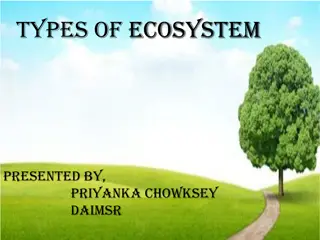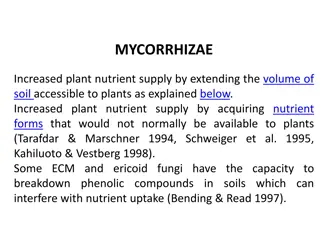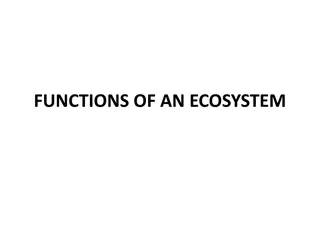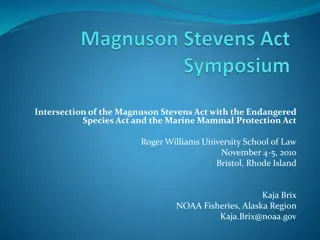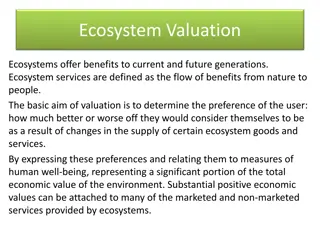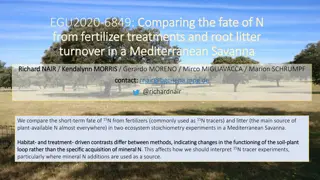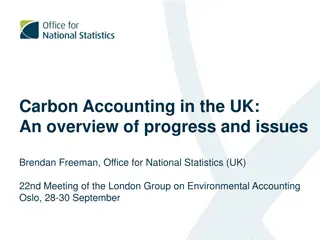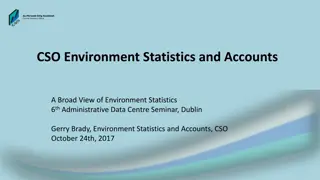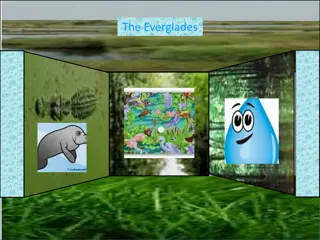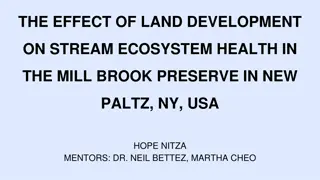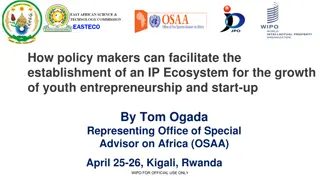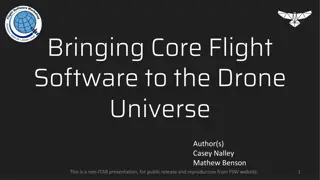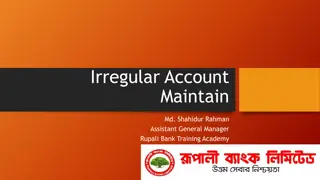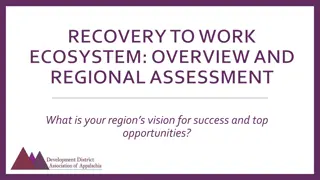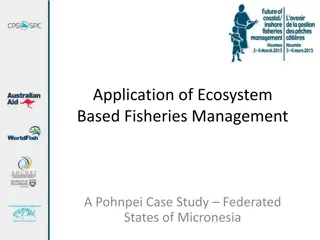
Ecosystem Accounting: Sequences and Options
This content discusses the sequence of System of National Accounts (SNA) in relation to ecosystem accounting, the relevance of combined presentations for ecosystems, and two options for recording ecosystem services in the sequence of accounts. It delves into the concept of ecosystems as assets or a separate sector, exploring their implications and considerations. The expert group meeting on Ecosystem Accounts in Melbourne highlighted the need to adapt existing economic frameworks for ecosystem-related matters.
Download Presentation

Please find below an Image/Link to download the presentation.
The content on the website is provided AS IS for your information and personal use only. It may not be sold, licensed, or shared on other websites without obtaining consent from the author. If you encounter any issues during the download, it is possible that the publisher has removed the file from their server.
You are allowed to download the files provided on this website for personal or commercial use, subject to the condition that they are used lawfully. All files are the property of their respective owners.
The content on the website is provided AS IS for your information and personal use only. It may not be sold, licensed, or shared on other websites without obtaining consent from the author.
E N D
Presentation Transcript
Session 10: Sequence of the accounts; aggregation and integration Expert Group meeting on Ecosystem Accounts, Melbourne, 18 May 2012
Overview The sequence of SNA accounts relevance to ecosystem accounting? Combined (i.e. monetary and physical) presentations related to ecosystems? A separate sector for ecosystems?
The sequence of SNA accounts SNA describes a sequence of economic accounts Stocks and flows -- production; income and expenditure; accumulation balance sheet SEEA Central Framework uses this sequence adapted for certain environment-related items adopt something similar for ecosystems-related matters?
Combined presentations related to ecosystems is it useful to provide a discussion of principles of combined presentations? provide examples of combined presentations?
Two options for recording ecosystem services in sequence of accounts (Edens, de Haan 2012) Option 1: Ecosystems as an asset and as a separate sector Option 2: Ecosystems as an asset A number of questions are raised in assessing these options
Two options for recording ecosystem services in sequence of accounts (Edens, de Haan 2012), cont d Ecosystems as a separate sector (option1): ecosystem products are a resource of ecosystems sector (and a use by producers and consumers) estimates of output, operating surplus, saving etc. are generated in respect of the ecosystems sector degradation is attributed to ecosystems sector as owner of the asset (though the ecosystem is degraded by a different sector)
Two options for recording ecosystem services in sequence of accounts (Edens, de Haan 2012)cont d Ecosystems as an asset (option 2): The ecosystem is owned by economic units output of ecosystem services, and any degradation costs, are attributed to these units
Two options for recording ecosystem services in sequence of accounts (Edens, de Haan 2012)cont d Issues: is it useful to view ecosystems as akin to group of institutional units? is it logical to attribute production of ecosystem services to agriculture, government etc.? such producing units may be unaware of the production of these services to whom should we charge the cost of ecosystem degradation?
Is it useful to view ecosystems as akin to group of institutional units? Institutional sectors are identified so as to support a focus on the purpose, objectives and behaviours of these units Typically, institutional units are transactors e.g. corporations, government agencies etc. - making decisions and undertaking actions affecting the economy (and environment) i.e. they are not passive
Is it useful to view Ecosystems as akin to group of institutional units? Continued ecosystems may be dynamic and responsive, and might conceivably be viewed as akin to an institutional sector? but is this a useful thing?
Is it logical to attribute production of ecosystem services to agriculture, government etc.? such producing units may be unaware of their production of ecosystem services but allocating value of ecosystem services (and degradation) to these units provides an ongoing basis for policymakers to assess the full potential value (and cost) of such units to the community
To whom should we charge the cost of ecosystem degradation? Charging degradation to the ecosystem itself (option 1) fails to assign human responsibility for damage e.g. if a farmer degrades an ecosystem, shouldn t degradation be recorded against the operating surplus of the farmer? SEEA Central Framework assigns natural resource depletion to the responsible institutional unit SNA likewise records consumption of fixed capital against the producing unit
Questions for discussion Is the sequence of economic accounts useful for ecosystem accounting? include discussion of combined presentations of monetary and physical data related to ecosystems? separate sector for ecosystems i.e. option 1 or option 2? is it useful to view ecosystems as akin to group of institutional units? is it logical to attribute production of ecosystem services to agriculture, government etc.? who do we charge with the costs of degradation?



